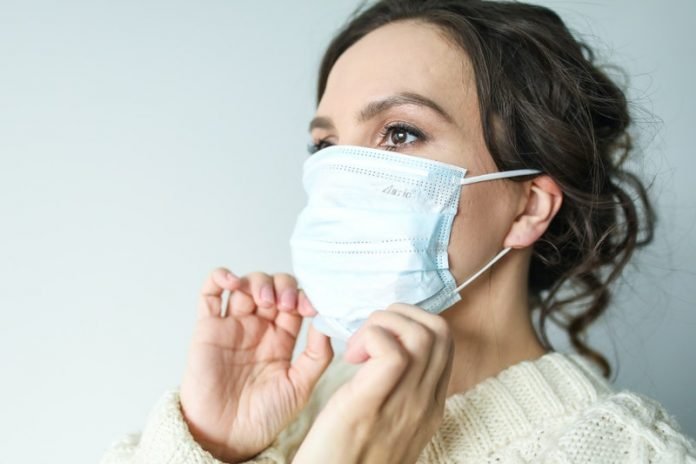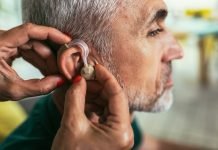
Tests. Masks. Distancing. Vaccines. Boosters. Pills. Therapeutics.
There are a lot more tools in our pandemic toolbox than there were two years ago, when tests consisted of difficult-to-find “brain ticklers,” masks were homemade, and many people were terrified of leaving their homes.
In fact, the SARS-CoV-2 toolbox is starting to look a lot more like the typical approach to battling other viruses. And that may mean that the time to establish a “new normal” is right around the corner.
“At the beginning of the pandemic, we had no other options,” says Jared Auclair, who is an associate teaching professor of chemistry and chemical biology at Northeastern.
“There were no vaccines, there were no therapeutics. The best we could do was test, isolate, and quarantine, and try to stop the spread.”
Now, vaccines significantly reduce the risk of a severe case of COVID-19, doctors have treatments that they can use to reduce the risk of an infection becoming fatal, and the virus itself seems to be mutating in a way that makes it less severe (albeit more infectious), he says.
“So, 2022 is sort of about making that transition to the new endemic world, or the ‘new normal’ that people talk about.”
Even at the height of the omicron wave, Auclair says, most positive cases were asymptomatic or mild—a notable difference from previous surges in coronavirus cases.
Public health experts took that data as an indication that it was time to deemphasize case counts as a metric to monitor the COVID-19 crisis, particularly in vaccinated communities.
“We saw lots of people test positive who, if [asymptomatic, surveillance testing] wasn’t happening, would have never been the wiser,” Auclair says of the Northeastern testing data during the omicron wave.
That’s the key difference, and a marked change from the beginning of the pandemic: If it had been a wave of cases of a virus that is already considered endemic, such as the flu, he adds, doctors would have only been testing symptomatic people.
The term “endemic” doesn’t mean that COVID-19 will go away. But we can manage it and live with it.
In fact, says Neil Maniar, director of the master of public health program, it means that “rates of disease stabilize, due in part to levels of natural and vaccine-induced immunity in a region,” and that outbreaks of the disease will become increasingly localized rather than global, and more manageable for the broader healthcare system.
“The term ‘endemic’ essentially refers to the baseline level of a particular disease in a population,” he says.
At that point, he says, “it’s no longer a one-size-fits-all approach and we really will be tailoring public health measures to meet the needs of much more localized areas.
We’ll be tailoring those measures based on the data that exist at the local level.”
People in the United States are seeing that play out now as state officials begin lifting indoor mask mandates, Maniar says.
“Lifting the mask mandates does not necessarily mean that kids in schools don’t have to wear masks. It means that now local school districts have the ability to say, ‘Well, what are the data telling us?’,” he says.
“If you have a community where you still have high rates of COVID-19 transmission, kids wearing masks will make sense, whereas in other communities where there are no cases or very few cases, it might be OK to say that kids don’t need to wear masks in those areas.”
When masks, testing, and distancing were the only tools that we had to fight COVID-19, all of those approaches were crucial in combination.
Individually, they had flaws: homemade masks of inconsistent quality only provided so much protection; testing was often hard to come by and results returned too late to be useful; and physical distancing wasn’t possible in all situations.
So public health experts advised using them all together in what some called “the Swiss cheese model,” because the holes in each individual strategy are covered when the strategies are layered over one another.
Now that tools such as vaccines and therapeutics to treat COVID-19 infections have been added to the mix, there are more layers of cheese to block the holes.
High-quality masks (such as N95s and KN95s) and at-home tests are also more readily available to the public now than they were even a few months ago.
With more strategies to choose from, people can decide what to do to fit the level of risk that they are comfortable with in various situations.
Although it was once thought that wearing a mask only protects others from your germs, scientists have since found that one-way masking does work to protect the wearer—even when interacting with someone who is unmasked.
This is especially true if the person wearing a mask is wearing a high-quality, medical grade respirator, such as the N95 or KN95.
“We know how to act,” Auclair says. And that earned knowledge has broader public health implications:
The flu seasons during the COVID-19 pandemic, for example, have been less severe compared to previous years, likely due to coronavirus precautions. “I think now we can minimize the spread of anything, really.”
In the nearly two years that COVID-19 has been circulating globally, scientists and the public alike have learned a lot about what to watch for in the data, how to use masks, how to maintain safe distancing and ventilation, when to stay home, when to get tested and what kind of information different kinds of tests give you, and how to navigate tricky conversations with other people about risk.
The goal of the post-pandemic ‘new normal’ is for our relationship to SARS-CoV-2, the virus that causes COVID-19, to become similar to how we relate to influenza, Auclair says.
He expects coronavirus cases to rise seasonally in the colder weather in step with flu cases, and for health-care professionals to administer annual shots to boost immunity against both viruses.
“The endemic state to me is really coexisting with COVID like we coexist with everything else: how we coexist with the flu, and other coronaviruses,” such as the ones that cause some colds, he says.
Although there are important clinical differences between the flu and SARS-CoV-2, Aulcair says that the way we relate to both diseases holds important parallels.
The flu caused a devastating pandemic 100 years ago, and still causes severe illness and even death in some patients during the flu season every year.
But we have vaccines to reduce the risk of severe cases, therapeutics to treat it, and the world does not shut down every year, he says. “I think we’re going there this year [with COVID-19], but it’s a process that people have to adjust to.”
Written by Eva Botkin-Kowacki.
If you care about COVID, please read studies that CBD from cannabis may inhibit COVID-19 infection, and this low-cost drug can treat COVID-19 effectively and safely.
For more information about health, please see recent studies about “super-antioxidant” that could revolutionize your health, and results showing scientists find antibodies that can neutralize Omicron.




